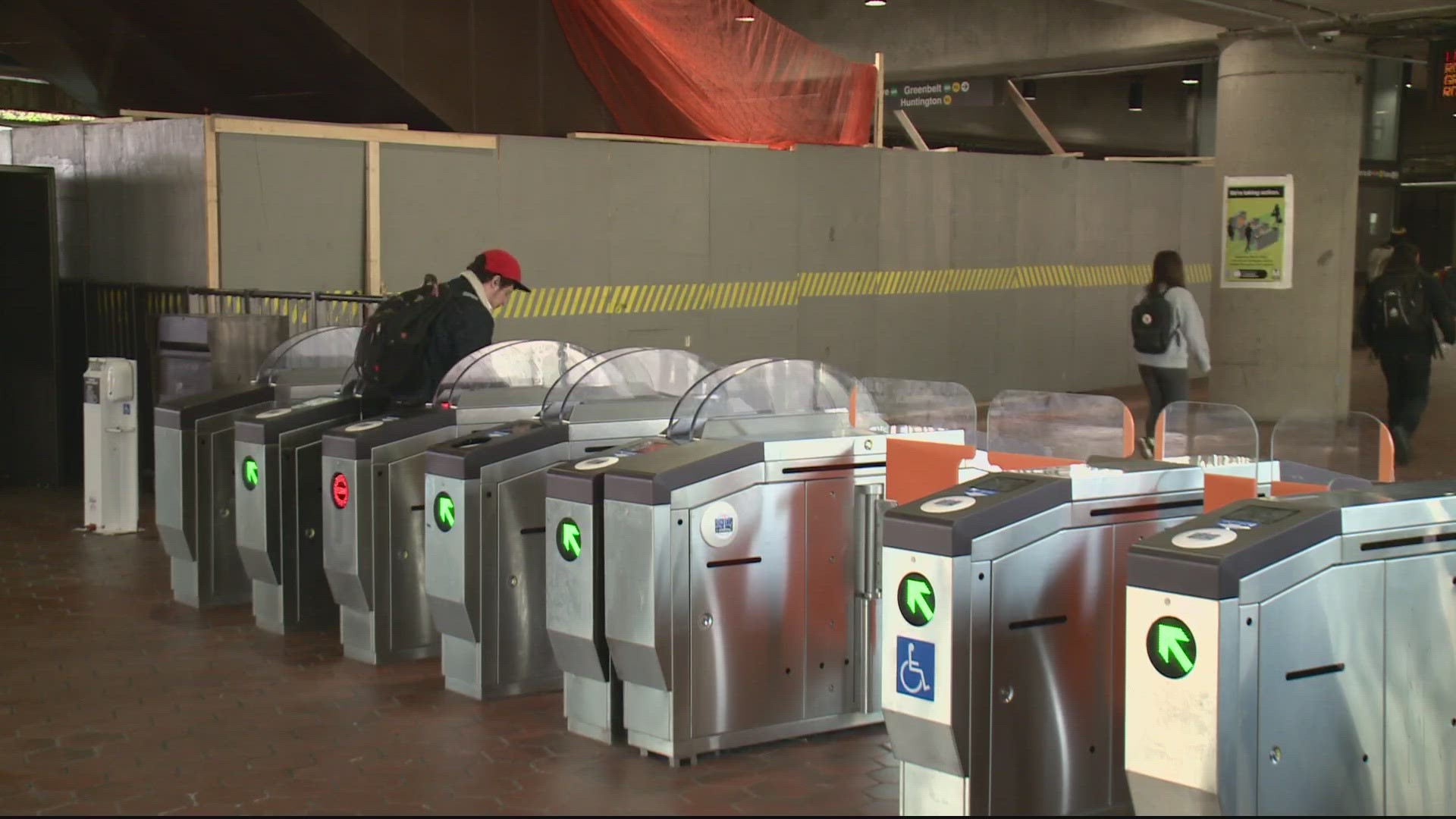WASHINGTON — Metro released a full report of the number of riders who are not paying for fares and a plan for how they will address fare evasion.
Ahead of a March 23 meeting with the finance and capital committee, WMATA released a 13-page presentation highlighting updated ridership and faregate numbers. From the beginning of this year to last week, Metro says riders took an average of 321,000 trips on weekdays, 199,000 trips on Saturdays, and 146,000 trips on Sundays. Of those weekday rides,13% of riders did not pay for the trip, meaning an average of 40,000 customers had a free ride.
In December 2022, new faregates were installed at all of the rail stations, in an effort to help track down riders who aren't paying for the fares. The new gates include larger and brighter displays, bi-directional access, and improved safety addition of new sensors for measurement of fare compliance, Metro said in its report.
Metro estimated a total cost of $35-$40 million to change some of the gates with single swing doors for standard aisles and add new motors/doors to existing cabinets. The swing doors will have laminated safety glass doors at a height of 28 inches, making it difficult for riders to jump over the gates.
The transit system says it is continuing multiple efforts to reduce fare evasion through education, issuing citations, communication and testing retrofits on faregates.
The new design of the single swing doors will be installed at the Fort Totten station by the end of March. The station was selected as the location to test the retrofits, due to seeing the highest ridership.
Metro plans to install the retrofits at nine other stations across the region as part of the first phase of development. In the second phase, the remaining stations will have retrofitted barriers set in the span of 15 months.

